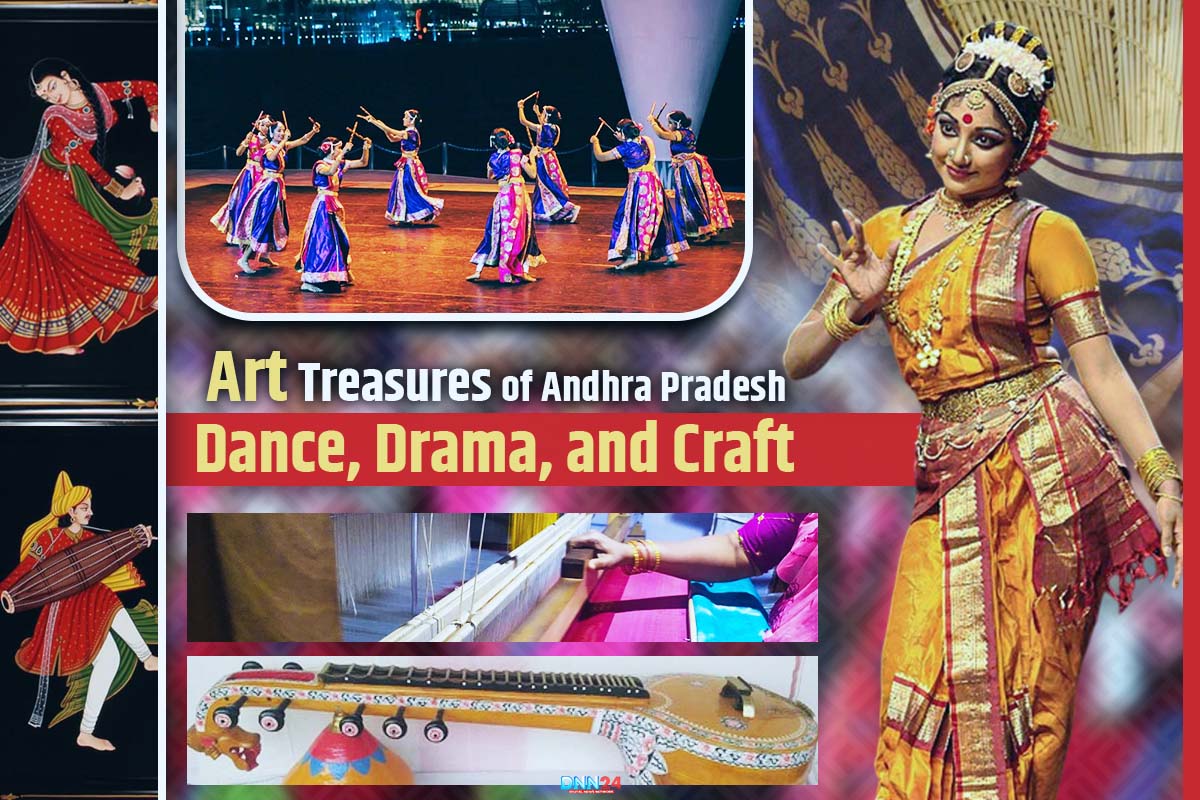Traditional arts exist across the entire span of drama music and dance throughout the culturally rich state of Andhra Pradesh. Kuchipudi stands among the global audience as the most well-known traditional classical dance form from Andhra Pradesh. The region of Andhra Pradesh safeguards numerous distinctive arts which bear their particular historical value and specific beauty. This piece will guide through the diverse artistic landscape of Andhra Pradesh.
Kuchipudi: The Dance of Expression
The classical dance form of Andhra Pradesh known as Kuchipudi was born in the Andhra Pradesh village of Kuchelapuri. Brahmin men in India began using Kuchipudi dance as an occupation more than two centuries ago taking its roots as far back as 300 BC or earlier. Kuchipudi joins the other classical Indian dances as a performance that harmoniously unites aesthetic expression with music. A combination of the musical instruments like thalam violin surpeti and tanpura creates an enchanting orchestral experience during the dance.
Kuchipudi’s beauty produces itself through its expressive motions and elegant body movements. The performers use dialogues during their acts to present Indian mythological stories. Tarangam stands as an enchanting Kuchipudi form that requires performers to execute their steps near the perimeter of a tiny brass plate. An exciting Kuchipudi variation lets performers display their dancing finesse by carrying decorated water-filled pots on their helmets.
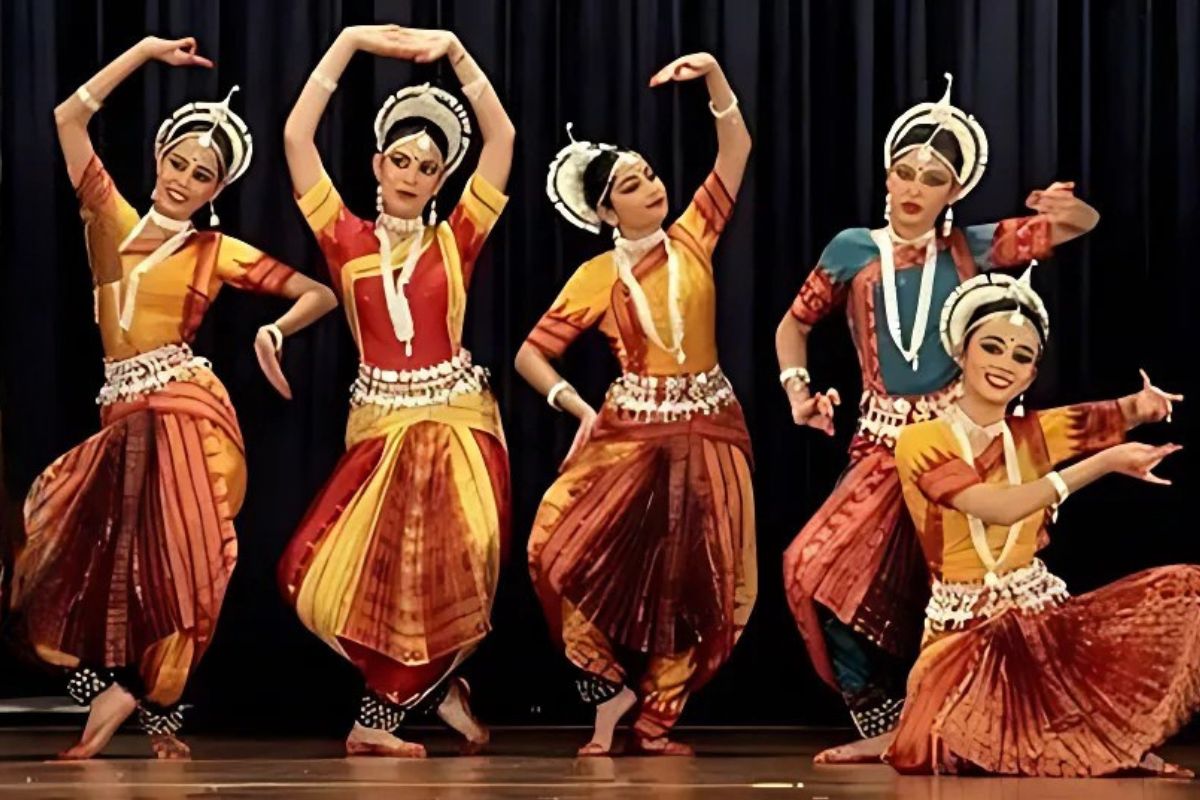
Physical education institutions and registered educational institutions make it possible to learn Kuchipudi by providing students with complete training. The dance format attracts performance viewers because of its graceful cultural meaning.
Kalamkari Paintings: Art on Fabric
The region of Andhra Pradesh gave birth to Kalamkari paintings which represent a distinctive and uncommon artistic practice. The main characteristic of this painting technique emerges from its dependence on natural materials. The artist uses a quill brush to create Kalamkari paintings while obtaining paint colors from various vegetables. During the 10th-century rise in India-Persia trading activities Kalamkari art achieved its highest level of popularity. Who introduced the Persian painting style that goes through twelve sequential stages in its creation process?
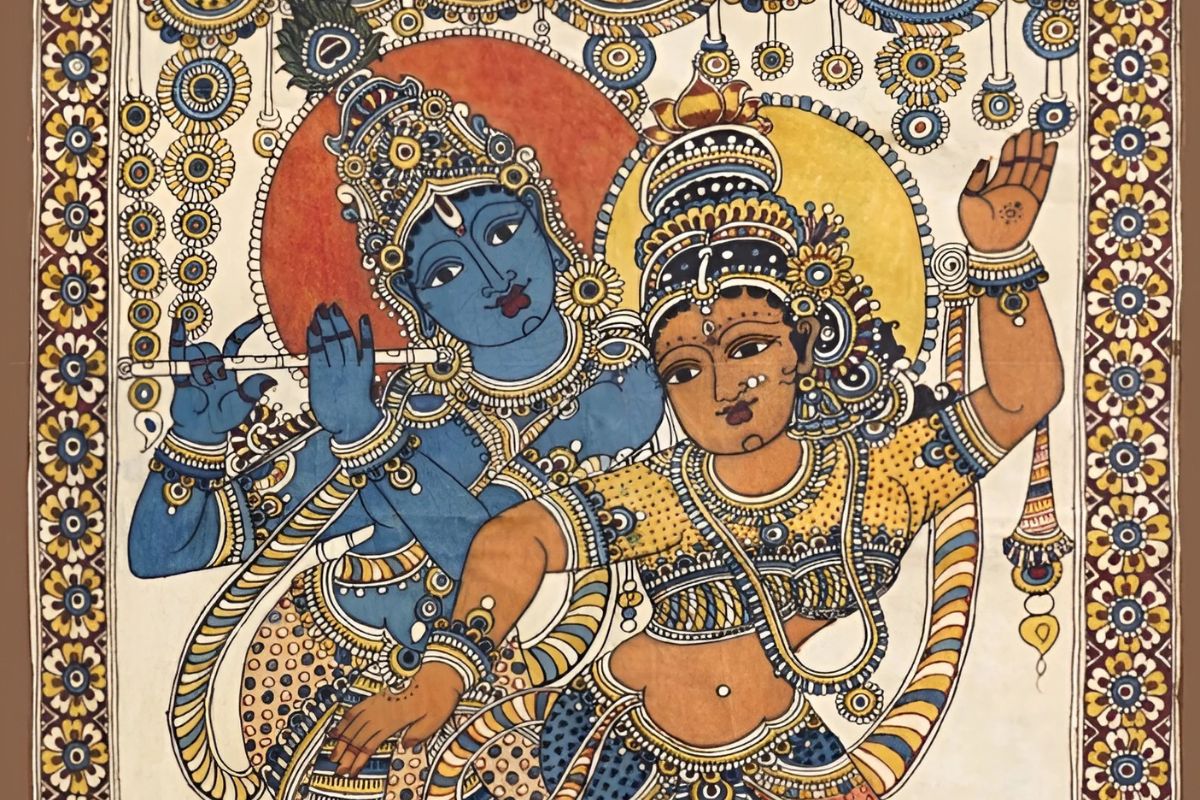
Machilipatnam locals frequently purchase printed wood blocks to exhibit the refined Kalamkari artwork designs. Artists utilize this artistic technique for covering both fabrics and wall hangings as well as various other materials. For visitors to Andhra Pradesh Kalamkari becomes a mandatory acquisition because of its brilliant colors and meticulous design patterns.
Buta Bommalu: The Dance of Puppets
Buta Bommalu represents a particular style of puppet show dancing through the use of baskets. Crafters create the puppets from bamboo strips that also function to develop baskets. Each puppet features large hollow designs which dancers access through openings to operate inside. Through strings attached to the shoulder and waist region the puppet figure receives its performance direction from the dancer.
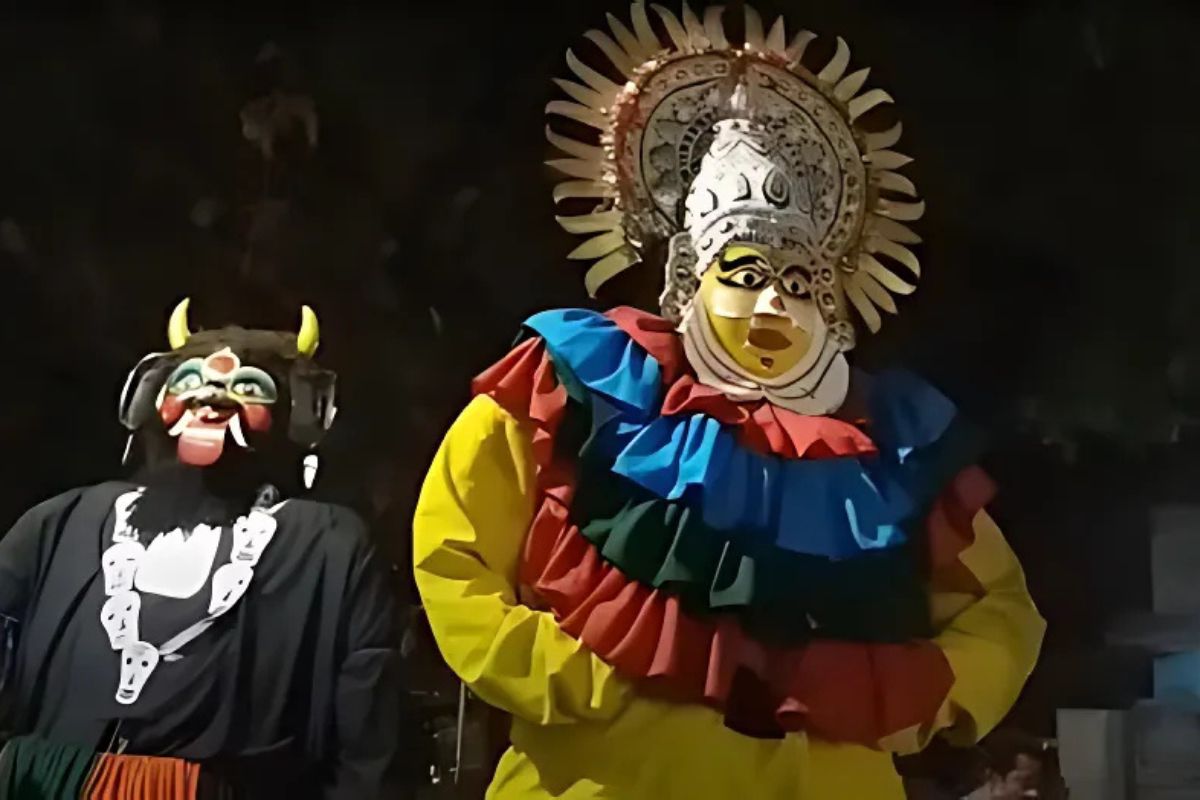
Dancers must overcome great challenges because the typical puppet dimensions amount to eight feet in height with a three-foot radius. The traditional dance performance features puppets that resemble divine figures as they relate religious tales at annual religious events. People visiting the West or East Godavari districts during festivals must experience the tradition of Buta Bommalu.
Lambadi: The Nomadic Tribe Dance
The tribe dances performed by women solely exist as traditional cultural practices within the Andhra Pradesh state. People perform this dance which expresses routine agricultural activities including farming as well as harvesting activities and planting tasks. During their dance performance women decorate themselves with artsy accessories and artful items to produce a show which fascinates viewers through visual appeal. The Lambadi tribal community carries out its existence by performing this dance as they roam across the state for economic reasons.
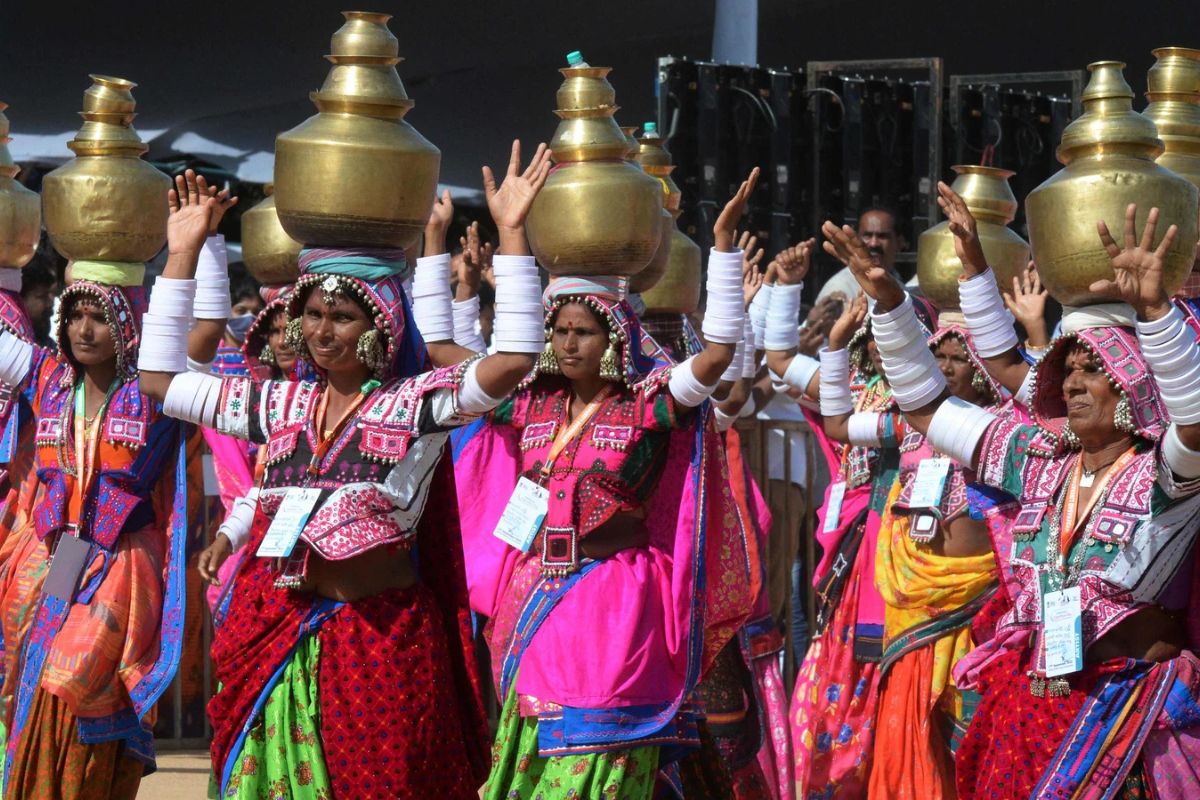
Festivals enable Lambadi dancers to perform on public streets while dancing gracefully with their colorful costumes to entertain spectators. The dance form Lambadi creates captivating performances which reveal tribal cultural elements of Andhra Pradesh even though it remains less known than Kuchipudi.
Nirmal Paintings: Ancient Art with Herbs and Minerals
Nirmal paintings as an ancient art tradition consist of using herbal and mineral substances to produce pigments. The basic dye for Nirmal paintings consists of gold which emerges from combining gums and herbal materials. Skilled craftsmen based in Hyderabad continue to practice this particular painting style which uses epic narratives.
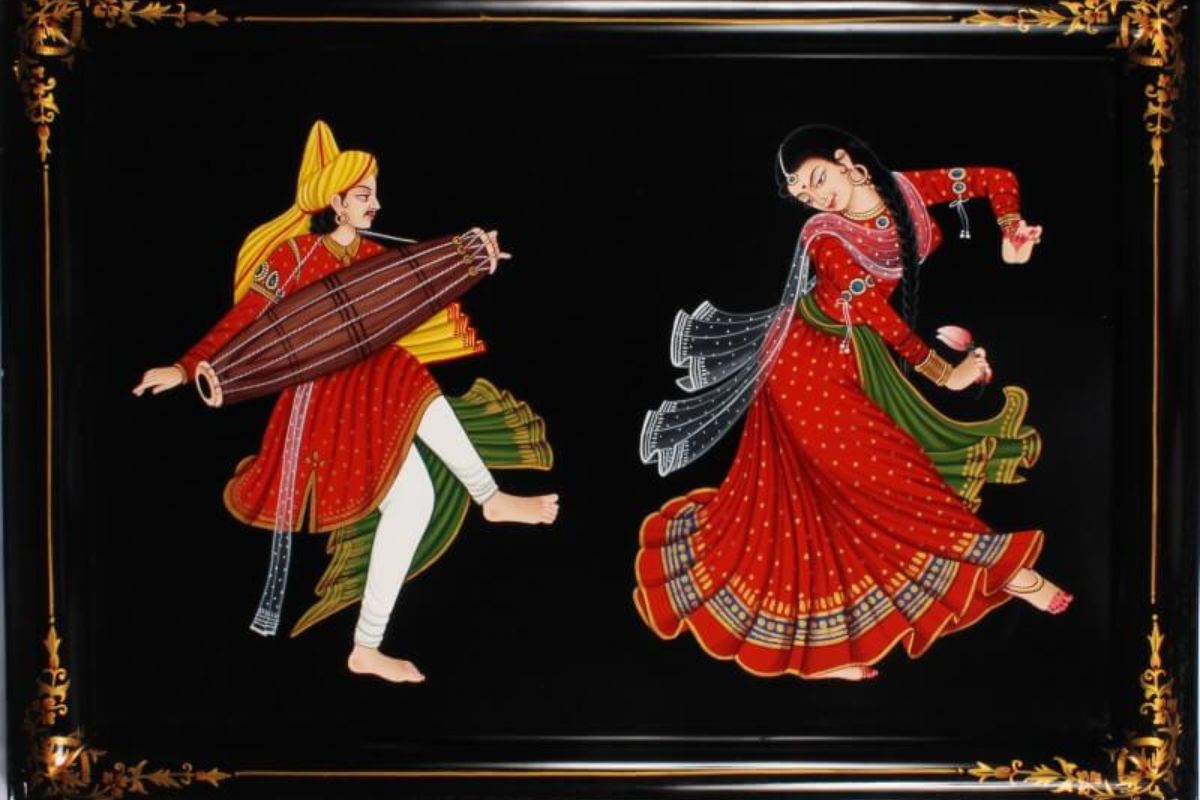
Mughals first learned about Nirmal paintings after traders discovered their magnificent appearance. The Mughals protected and developed this aesthetic art form by establishing multiple workshops that recruited skilled metiers throughout the city. Nirmal paintings maintain their standing as a revered art tradition in the province of Andhra Pradesh.
Kolattam: The Dance of Sticks
Kolattam refers to stick-dancing which takes place in circular formations. Between the inner circle players and outer circle dancers there exists a symmetrical formation as dancers play instruments in the center and dance together in harmony. The main tool in this dance consists of a stick adorned with colors that enhances its visual appeal during the show.
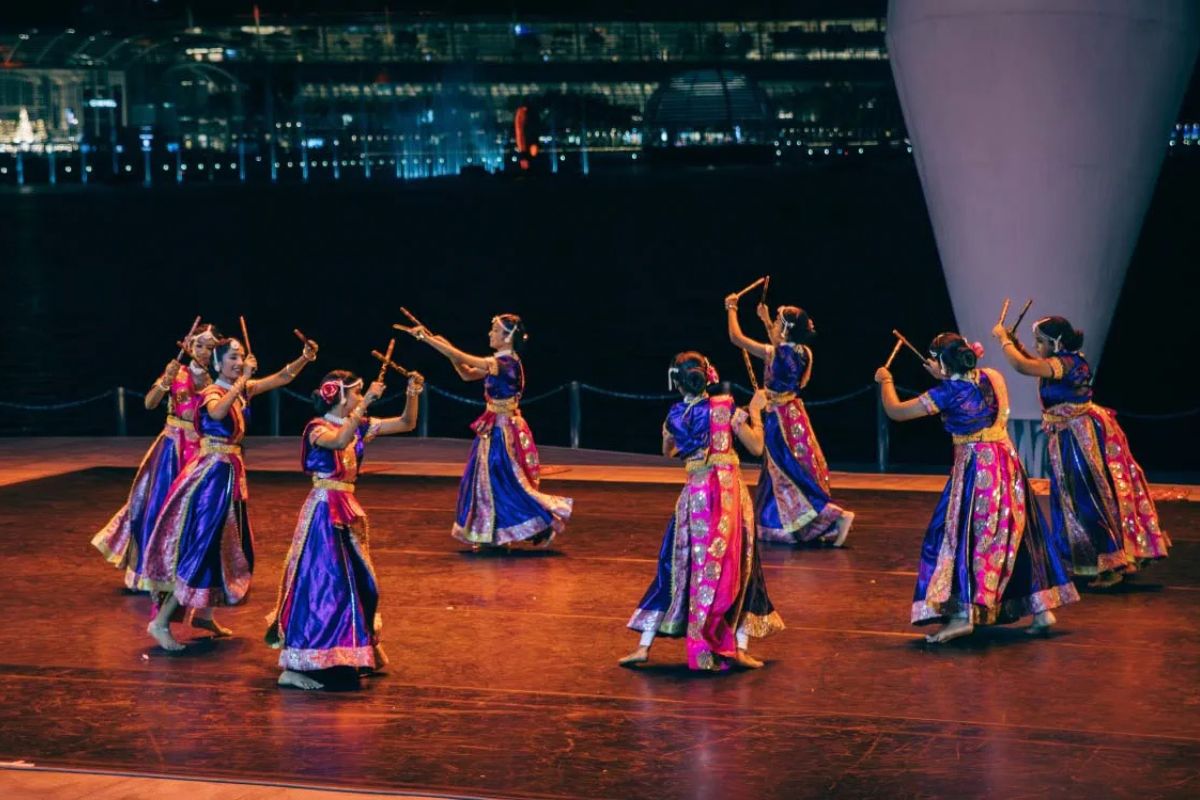
Various dances make up the total of approximately 50 Kolattam types in Andhra Pradesh. Visitors to Andhra Pradesh must witness this excellent dance form because it provides a dynamic performing experience. The different verses of Kolattam prevailing today showcase the rich cultural heritage of the state.
Bhamakalpam: The Love Fight Dance
The traditional Bhamakalpam dance delivered its inception using pure Kuchipudi dance techniques. The traditional dance performance shows the romantic struggle between Lord Krishna and his wives while displaying the emotional elements of expression from the dancers. Traditional yogis from the 17th century established this dance type which remains one of the few traditional dances available for both men and women to perform.
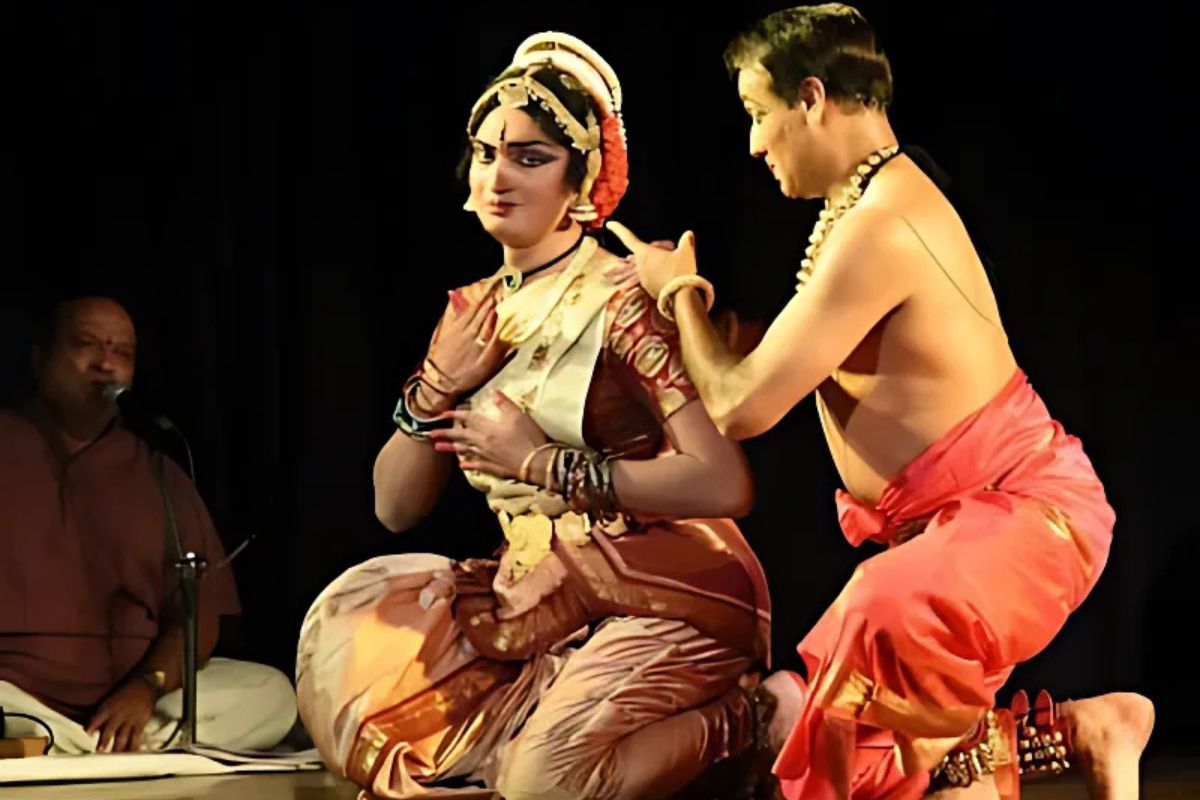
A single actor portrays Bhamakalpam through speech and appropriate performing steps in a one-play performance. Performance ease is enhanced by the dancers wearing light wooden ornaments that function as accessories. The performance gains additional attraction through the musical instruments the dancers use.
Veeranatyam: The Dance of the Brave
Among South Indian dances Veeranatyam stands as an intense forceful dance which translates from the brave language. The mythological account shows Lord Shiva danced after he became angered by an act of humiliation. As a display of its intense power this dance destroyed the geographical area where he received humiliation.
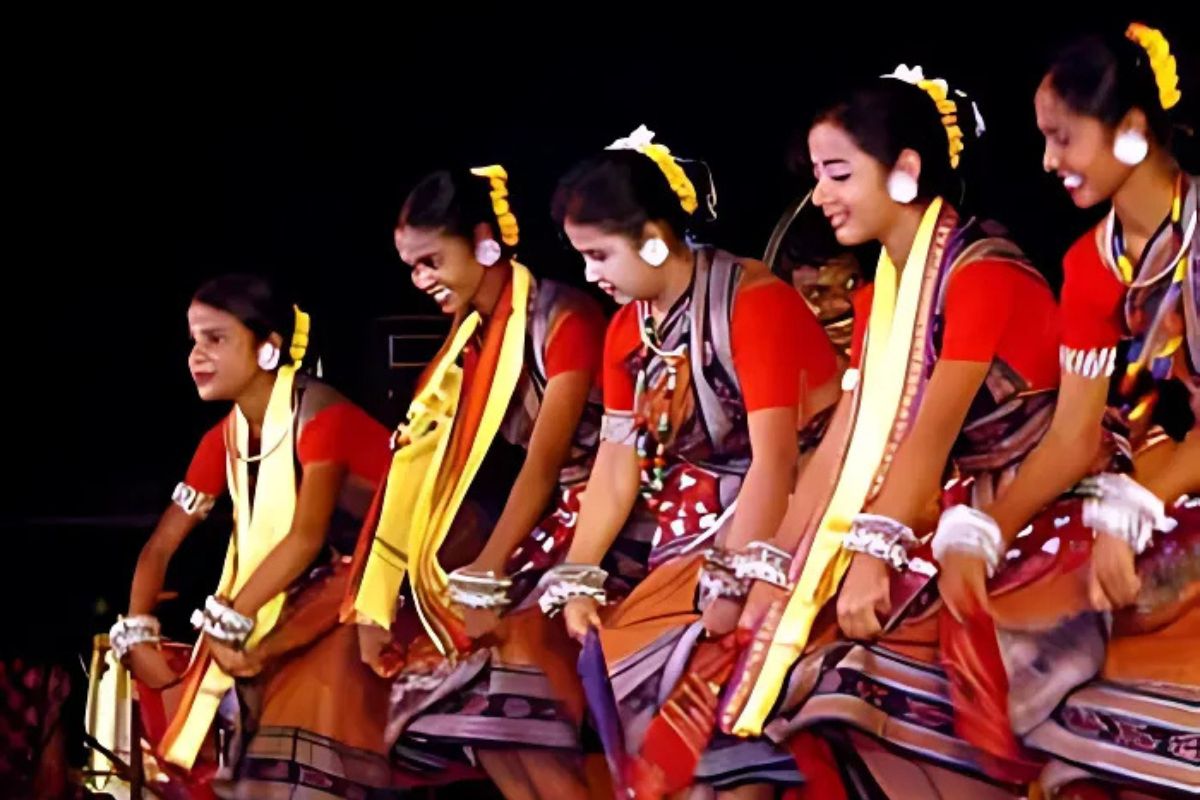
Veeranatyam takes place traditionally by the River Godavari because this dance holds significant importance for Lord Shiva festival celebrations such as Maha Shivaratri. The dancing performance is traditionally restricted to male performers who execute different stages featuring expressions of anger and displays of bravery. During the initial segment dancers express themselves by holding a plate containing burning camphor as they perform until the flame ends. In subsequent stages the performers demonstrate their abilities by dancing with a multi-substituted pole decorated with bells and tridents and spears.
Burrakatha: The Art of Storytelling
Burrakatha functions as a traditional storytelling tradition which existed earlier than contemporary media emerged. Burrakatha performance combines multiple storytellers along with rhythmic storytelling and small songs which a bow-like instrument accompanies. While the main storyteller narrates the tale the additional performers provide supplementary background effects together with echoes to optimize the storytelling experience.
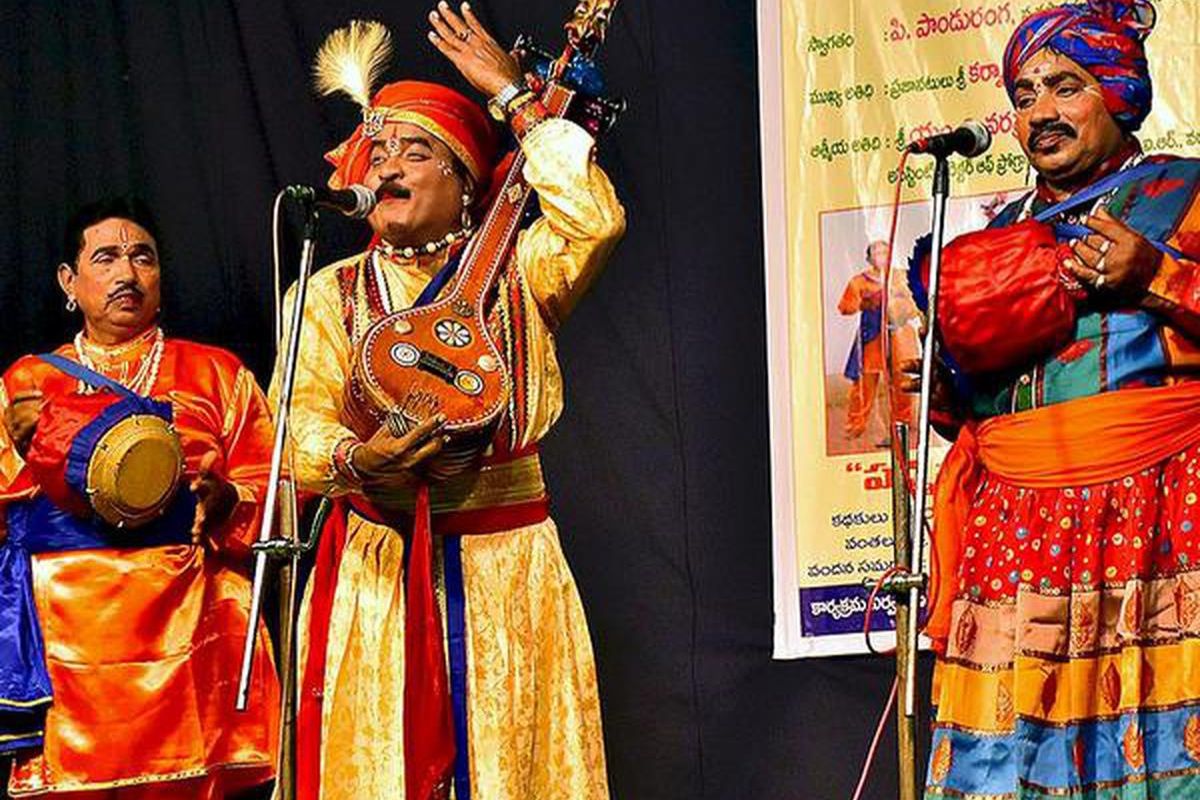
Dance and humorous performance from side tellers serve to attract more viewers to the show. Burrakatha delivers to audiences an entertaining storytelling experience through its rhythmic narration which combines with energetic performances.
Dhimsa: The Peacock Dance
Tradicional tribes in Araku hill station perform Dhimsa as their tribal dance. During the peacock dance performers carry bunches of feathers while making zigzag movements similar to serpent dance movements. The bright color combinations with graceful motions create Dhimsa into an atmospheric dance form that provides visual pleasure together with entertainment.
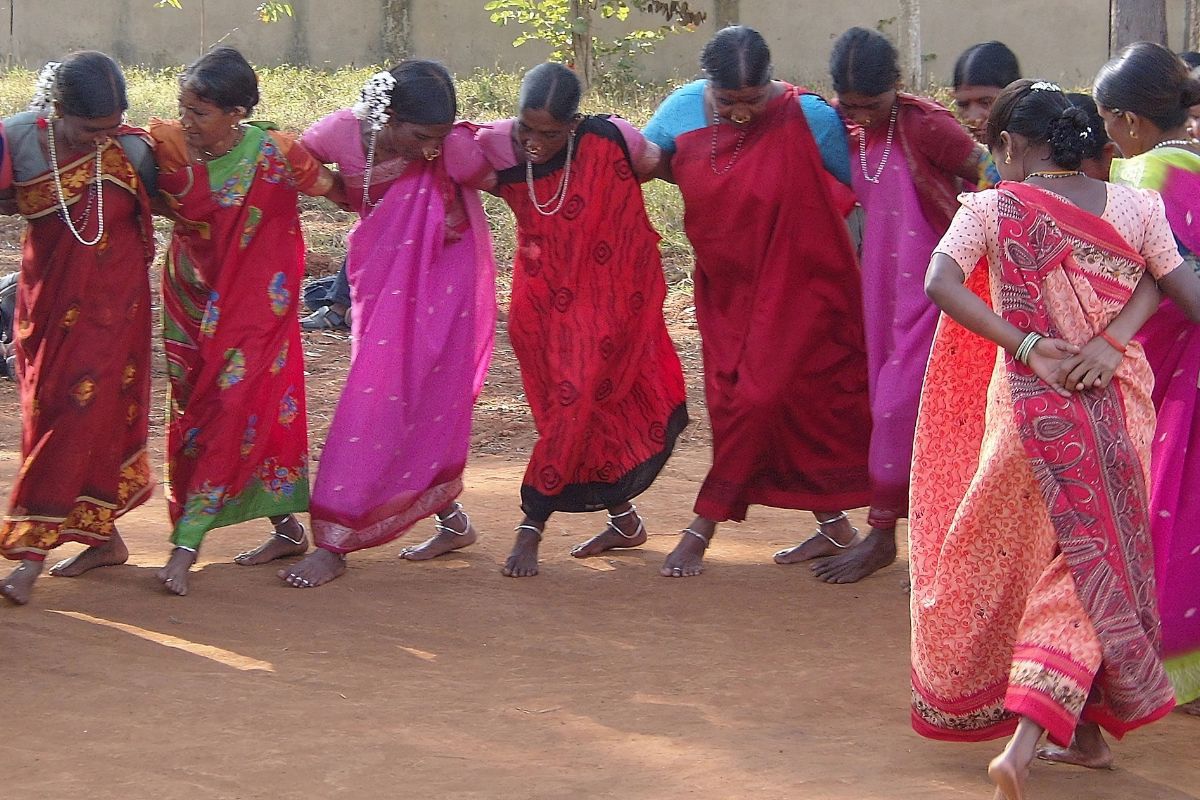
During the tribal festival in April numerous art admirers travel to Araku to watch this dance performance. Visitors experience a special and intriguing attraction from the Andhra Pradesh tribal cultural tradition thanks to the range of Dhimsa dance types that exemplify this heritage.
Crafts of Andhra Pradesh: A Rich Heritage
The cultural heritage of Andhra Pradesh can be observed through the diverse range of crafts which the state exhibits. Among the most prominent crafts of Andhra Pradesh are Budithi art combined with Mangaligiri sarees and Durgi stone art and Etikoppaka wooden crafts and Eluru carpets and Dharmavaram sarees and Pochampally silk and cotton sarees and Kondapalli toys and Kalamkari painting and Bidri artwork.
Adults with artistic skills apply their traditional knowledge and materials to create artistic masterpieces through their craftsmanship. The artisans facilitate visitors to observe the creative process while providing opportunities to acquire a few skillsets as they witness the local crafts being made.
The southern state of Andhra Pradesh serves as a precious historical site for art and cultural artifacts which includes several dance styles alongside musical and craft endeavors. Every artistic expression in Andhra Pradesh from graceful Kuchipudi dance through lively Dhimsa dance and intricate Kalamkari paintings and delicate Nirmal paintings showcases its own fascinating dimensions. Discovering Andhra Pradesh’s art forms enables people to experience the abundant cultural history which illuminates the active nature of the state’s multiple traditions.
Also Read: Timeless Treasures: The Art and Cultural Heritage of Telangana
You can connect with DNN24 on Facebook, Twitter, and Instagram and subscribe to our YouTube channel.

